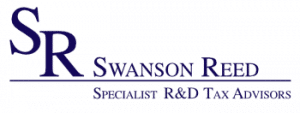Introduction
A Research and Development claim can potentially provide a net cash benefit of up to 30% of your development costs for SME’s and 7.2% for larger companies. Therefore if a company is engaging in R&D activities by producing new knowledge, exploring the path of lodging a claim and doing so correctly is a worthwhile process.
Often companies will seek to utilise their accountants when making an R&D claim, however this often results in receiving a return that is only a fraction of its potential or could also result in receiving a costly HMRC enquiry. Under the new HMRC penalty regime, careless mistakes such as over claiming can incur a 33% penalty of the amount over claimed. This highlights why it is crucial that claims are lodged accurately.
Correctly claiming R&D
Many companies are often unsure when it comes to working out which projects and activities will be eligible for R&D tax relief. The most beneficial way to go about lodging a Tax Relief Claim is to carry out the process together with an R&D tax specialist. An R&D tax specialist takes a consistent approach as to what is expected when receiving a claim, which will allow maximising your company’s R&D return and ensuring accurate lodgement.
When submitting a claim it is expected by HMRC that companies carry out a process which accurately demonstrates the amount of qualifying R&D activities carried out and how they abide with requirements of the legislation.
At a minimum it is expected by HMRC that supporting documentation of the following is provided:
- Records of which R&D projects have been claimed for and fulfilment of legislation eligibility requirements
- Why and how the activities of projects qualify as R&D under
 legislation
legislation - An outline of the process that has been undertaken to ensure only qualifying activities and allowable costs are included.
Schemes
There are two R&D tax credit schemes.
- The small or medium sized enterprise scheme
- Research and Development Expenditure Credit (RDEC) (this replaced the large company scheme in April 2016)
SME Scheme
An SME is defined as a company with less than 500 employees with either an annual turnover under €100 million or a balance sheet under €86 million.
The tax relief on eligible R&D costs are 230% SMEs can claim RDEC if they partake in subcontracted or subsidised research.
For every £100 of eligible expenditure, your company can reduce its CT by an extra £130 in addition to the £100 spent.
For instance:
The R&D Relief is £20,000 x 130% = £26,000
Normal taxable profit £26,000
Taxable profit less R&D Relief £26,000 – £26,000 = 0
Revised taxable profit = 0
If the company makes a loss, it can opt to receive tax cash credits rather than carrying forward a loss.
RDEC
The RDEC enables companies with no Corporation Tax (CT) liability to benefit through a tax reduction, cash payment or other duties due. As of 1 April 2015, the tax relief is given at 11% on the amount of eligible R&D expenditure.
BIS Guidelines
There are guidelines that must be satisfied to claim tax relief that are issued by the Secretary of State for the Department of Trade and Industry for the purposes of Section 837A Income and Corporation Taxes Act 1988. The BIS Guidelines, formerly DTI Guidelines provide a definition of R&D for a number of tax purposes, including R&D tax relief. [1]
Eligibility requirements
Qualifying projects in any scientific or technological field such as software, medicine, science, manufacturing, engineering, gaming, and even architecture may be eligible for R&D tax relief. Costs, such as employee and subcontractor costs, materials, software, and capital expenditure may also be eligible for relief.
Ask whether you are producing new or improved products or services including the way something works in your business. R&D projects must be scientific or technological projects that are both related to the business’ trade and advances society’s overall knowledge and capability, not just the company’s.
Also ask whether the design and development involved a degree of uncertainty in which the answers were not known or obvious. The project cannot be something that simply improves existing products – it must resolve a high level of scientific or technological uncertainty.
These must be genuine uncertainties that are not solvable through normal discussion, such as questions about whether it is scientifically or technology feasible, or how to execute a concept in the real world.
Your organisation must own any intellectual property that could arise from the project if it is claiming tax relief under the SME scheme.
Scientific method
The product or service must incorporate scientific or technological advance and cannot just be commercially innovative. Work in the arts, humanities and social sciences, including economics do not qualify and cannot be claimed.
Scientific or technological uncertainty exists when the knowledge of whether something is possible scientifically or technologically feasible, or how to achieve it in practice is not readily available or deducible by an expert in the field. If it is a problem that has been overcome in past projects in similar circumstances, they are unlikely to be uncertainties.
Document what the uncertainties were and their start and end dates. Dates are important to ensure your company claims the correct amount of relief. Focus on the uncertainties and new knowledge being pursued rather than a description of the finished product. The uncertainties should be explained in a way that is understood by someone who is not an expert in the field. If new issues arise once the product has started production, then the R&D process can take place again. Also include a breakdown of expenses.
Describe the methods that were used to overcome the uncertainties and the experimentation and analysis. This should include successes and failures and explanation of the outcomes. It is best to document activities concurrently to ensure necessary information is recorded.
You should state why the knowledge is not readily deducible by a competent professional. This could include previous projects by others who have failed to resolve the problem. If there is not much public information on the project, you will need to show why the people working on it are competent professionals. This could be done by outlining their professional qualifications and experience and have them explain why it is a scientific or technological uncertainty.
Qualifying Costs
All activities being claimed as R&D must meet definitions set out by the Department for Business, Innovation and Skills. [2]
If the business meets these conditions, it can claim tax relief for revenue expenditure for the activities outlined. Revenue expenditure is the day-to-day running costs of the business, such as employee costs, staff providers, materials, payments to clinical trial volunteers, utilities, software and subcontracted R&D expenditure.
Support staff costs only qualify if they relate to eligible indirect activities. Employment-related benefits cannot be claimed.
For staff costs paid to an external agency (not employees or subcontractors) who are actively engaged in the project, relief is often given on 65% of the payments made to the staff provider.
SMEs can claim tax relief on 65% of the payment to a subcontractor. The subcontractor does not need to be a UK resident and the subcontracted R&D does not need to be performed in the UK.
For the RDEC scheme, subcontracted expenditure is generally not allowable. However, 100% of the R&D expenditure can qualify if the subcontractor is an individual, a partnership made up wholly of individuals or a qualifying body.[3]
Costs that do not quality
Qualifying costs do not include capital expenditure on assets, however you may be able to claim a 100% R&D allowance on capital assets including machinery used for the activities. Expenditure on the production and distribution of goods and services does not qualify either, nor does the cost of land, or payments for the use or creation of patents and trademarks. Despite this, the Patent Box allows businesses to apply a 10% rate of Corporation Tax to profits from its patented inventions.
Case study (construction)
More and more companies are completing R&D in an effort to exceed traditional building methods in terms of durability. A company that specialised in building laboratories designed some buildings with removable walls so that a unit could be removed and replaced inside. The technological uncertainties for this project had not previously been overcome, and it was not yet known if the idea was viable and therefore the project was viable.
Case study (agri-food)
Projects that aim to develop better crops with higher vitamin content, that produce higher yields, or are more resilient, are examples of qualifying R&D activities. However, a project to create a food container with a new innovative design would not qualify, as the uncertainty is not scientific or technological, but commercial.
Conclusion
General CT requirements state that sufficient records must be kept to support the entries on your CT return. It is important to document all research activities and expenditure simultaneously, to make it easy to access the information when needed. R&D claims are looked at very carefully and the Corporation Tax penalty regime implements a 33% penalty for careless over-claiming. However, when applied for correctly, the R&D schemes can provide significant tax benefits for eligible companies.
To further discuss and find out more information about how your company can benefit from an R&D tax claim, contact one of our Swanson Reed tax credit specialists today for a free assessment. We look forward to speaking with you.







